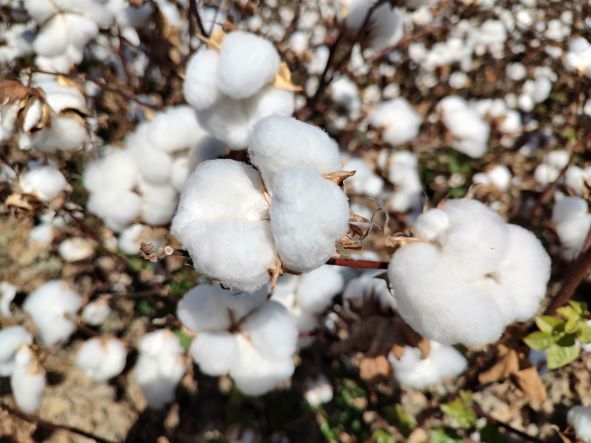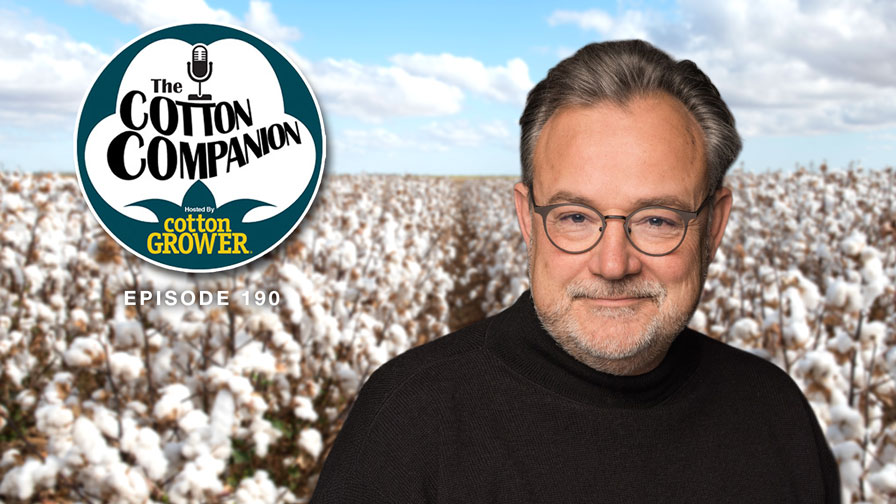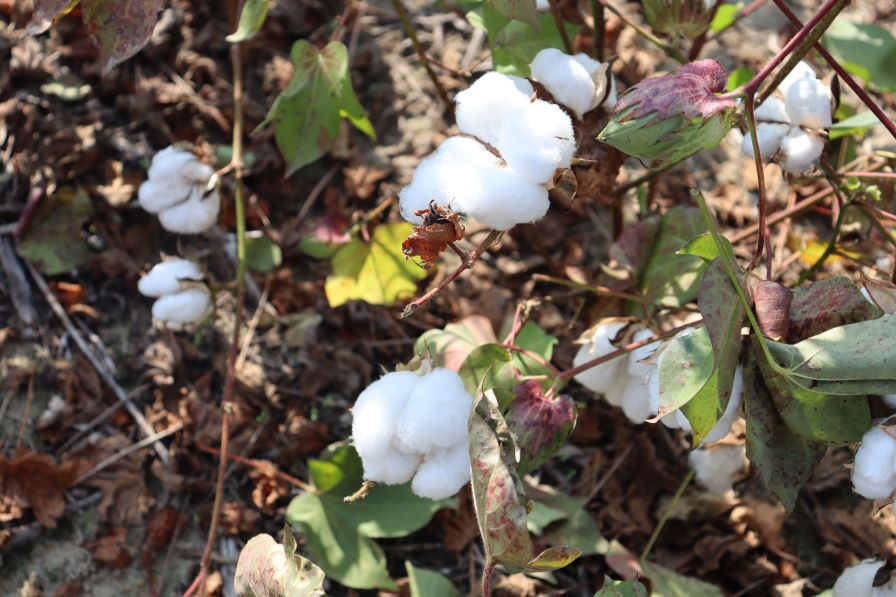Scientific advances in predictive modeling now allow long-range weather forecasting, pathogen identification, spore transport across states and regions and more. In the near future, farmers may be able to use these data-driven decision support tools to prevent diseases, reduce costly crop inputs, and determine the best crops to plant in each growing season.
“We’re working to open new doors for understanding the disease environment in a farmer’s field in-season, as well as the future,” says Kaitlyn Bissonnette, Director of Agricultural Research for Cotton Incorporated and former University of Missouri Extension plant pathologist for field crops. “Our goal is to help farmers pre-determine which diseases may be in their fields and make more accurate decisions about the crops they plant.”
The National Predictive Modeling Tool Initiative (NPMTI) is being developed by academics across the country. The initiative was launched in 2020 as a collaborative network of scientists from the USDA’s Agricultural Research Services, Los Alamos National Laboratory, several university and private laboratories, and nearly two dozen university Extension scientists and extension professionals. All are focused on developing region-specific predictive models to give growers information on disease risk, management options, and to inform development of disease-resistant crop varieties.
“A national USDA initiative broadens the geography and crop disease knowledge across regions,” explains Bissonette. “For example, cotton crops are grown from the Carolinas all the way to Texas. The potential for this modeling tool will help growers across regions know where or when not to spray a fungicide.”
Farmers want to reduce the cost of crop inputs on all field crops and are concerned about using fungicides when they may not be needed. Predictive modeling from academic research can help make these crop input decisions.
How Environmental Zeal Backfired on Cotton
“If we can track disease spore movement and predict how it will move from states and regions, farmers will be better prepared to make crop input and planting decisions in real time,” says Bissonette.
Ultimately NPMTI will be a nationwide, multi-crop disease forecasting data tool to:
- Ensure crop quality and sustainability
- Provide climate change resilience
- Improve soil health
- Monitor pathogens and microbial diversity, including in crop residues, soils, air, and water quality
- Reduce yield loss by improving crop disease management techniques
- Increase precision of pesticide applications.
NPMTI will include primary research to provide insight for management decisions including crop, hybrid, and varietal selection; cover crop selection; tillage methods; seed treatments, fungicides, and other agronomic tools.
Findings will be reported through newsletters, various agriculture and national media as well as the NPMTI website. Ultimately, NPMTI will bring site-specific forecasting to crop producers.
“We want to understand and track disease fluctuations over time, plus track emerging diseases,” says Bissonette. “Hopefully, with better detections, we will enable farmers to make more precise and earlier decisions about what to plant – where and when – plus thresholds for treatment.
“Currently most of the existing pathogen data and information is state specific. NPMTI will enable university and USDA collaboration among researchers to make specific recommendations and issue alerts that are tailored for specific diseases on individual farms.”
Initially NPTMI is focused on key diseases in cotton (five diseases in 11 states), corn (four diseases in eight states), and wheat (two disease complexes in six states.) Additional states, crops, and diseases will be added as future funding permits.
Historically, tillage was used to bury crop residues in the soil to promote rapid decomposition of stalks, leaves, and associated pathogens, while non-crop areas were often maintained vegetation-free.
With increasing use of no-till and conservation tillage practices, crop residues now remain on the surface providing soil health benefits. Reduced tillage and crop residues result in pathogen inoculum for future crop infection. Also, non-crop areas of fields are often managed as grassed waterways, filter strips, and wildlife habitats. These non-crop areas in a field can serve as a pathogen bridge from one crop season to the next.
While these conservation practices provide important benefits, they also increase the risk of crop diseases.
Methods to forecast inoculum exposure would allow growers to take timely preventative actions such as delayed planting, using resistant varieties, choosing selective fungicides, crop growth regulators, irrigation management, and targeted rotations. Limited tillage would be used only where necessary along with other agronomic practices.
“The initiative goal is to bring a better understanding to farmers of the diseases in their fields and what the future might bring,” says Bissonette.
Ultimately, researchers involved in the NPMTI project aim for better crop yields with fewer crop inputs for greater yield.
“We plan to help farmers manage diseases proactively via collaboration of data across the country to create models for disease yield-robbers,” says Bissonette. “Scientists want to explore disease predictive modeling area in-depth. I believe the NPMTI will help advance farmers’ decisions about fungicides, sustainability and profits.”
Based on information from the National Predictive Modeling Tool Initiative
1
1
5
Academics Support USDA National Predictive Modeling Tool Initiative









